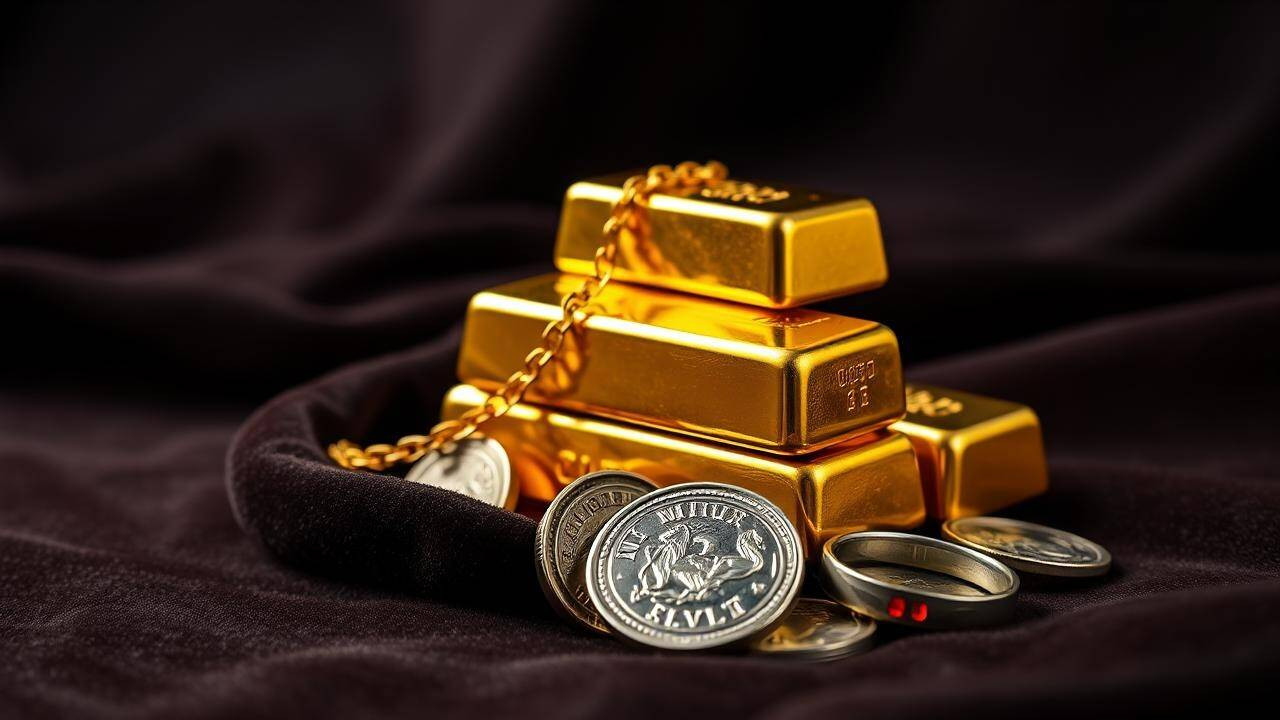Gold and silver prices soared to lifetime highs in the domestic futures market, mirroring a robust international rally. This surge is primarily driven by growing expectations of US Federal Reserve rate cuts and a weakening dollar, significantly boosting demand for precious metals. Ongoing geopolitical tensions, including trade disputes and conflicts, are also contributing factors.
Gold Rush: Why Prices Are Surging to Record Highs
Gold. The word alone conjures images of wealth, security, and enduring value. And lately, the precious metal has been living up to its legendary status, surging to all-time highs, leaving investors and economists alike wondering what’s fueling this golden frenzy. Forget digging in the Yukon; today, the real gold rush is happening on the markets.
For those watching the financial news, it’s no secret that both gold and silver have been on a tear. But what’s really driving this dramatic climb? Let’s delve into the key factors influencing the prices of these precious metals and what it could mean for your investments.
Decoding the Price Surge: A Perfect Storm
Several elements are converging to create this bullish environment for gold. One of the biggest factors is global economic uncertainty. When the world feels unstable – think geopolitical tensions, concerns about inflation, or anxieties surrounding economic slowdowns – investors tend to flock to safe-haven assets. And few assets are seen as safer than gold. It’s the investment equivalent of hunkering down in a well-stocked bunker when the storm clouds gather.
Another key ingredient in this price rally is inflation. As the cost of goods and services rises, the purchasing power of fiat currencies (like the US dollar or the Euro) decreases. Gold, on the other hand, is often seen as an inflation hedge, meaning its value tends to hold up or even increase during inflationary periods. People are looking for ways to protect their wealth, and gold offers a tangible alternative to currencies that are being devalued.

Furthermore, central bank policies play a significant role. When central banks signal a potential shift towards lower interest rates, it can boost the appeal of gold. This is because gold doesn’t offer a yield (like a bond or a dividend-paying stock). So, when interest rates are high, other investments may look more attractive. But when rates are low, the opportunity cost of holding gold decreases, making it a more compelling option.
Demand from central banks themselves is also a contributing factor. Many countries are diversifying their reserves and increasing their gold holdings, further supporting the price.
Finally, supply and demand dynamics always play a crucial role. While gold mining continues, the overall supply is relatively limited. If demand outstrips supply, as it currently does, prices inevitably rise.
Silver’s Shine: Riding the Gold Wave and More
While gold often steals the spotlight, silver is also enjoying a significant price surge. Silver tends to follow gold’s lead, benefiting from the same factors that drive gold prices higher – economic uncertainty, inflation concerns, and central bank policies.
However, silver has its own unique drivers. Unlike gold, which is primarily used as a store of value, silver has significant industrial applications. It’s used in electronics, solar panels, and various other industries. As the global economy grows (even with pockets of uncertainty), the demand for silver in these applications also increases. This dual role as both a precious metal and an industrial commodity gives silver an extra layer of appeal. To understand more about investing, visit our related page on [understanding investment portfolios](internal-link-to-portfolio-article).
What Does This Mean for You?
The soaring prices of gold and silver raise some important questions for investors. Is it too late to get in on the action? Is this a bubble waiting to burst? Or is this the beginning of a sustained bull run?
Predicting the future of any market is a fool’s errand, but understanding the underlying factors driving the current price surge can help you make informed decisions. If you’re concerned about inflation or economic uncertainty, gold and silver could offer a way to diversify your portfolio and potentially protect your wealth.
However, it’s crucial to remember that precious metals can be volatile. Prices can fluctuate significantly, and there’s no guarantee that they will continue to rise. As with any investment, it’s essential to do your research, understand the risks, and consider your own individual financial circumstances before making any decisions.
A Golden Opportunity or Fool’s Gold?
The current surge in gold and silver prices is a complex phenomenon driven by a confluence of factors, including global economic uncertainty, inflation concerns, and central bank policies. While precious metals can offer a hedge against these risks, they are not without their own volatility. Whether this rally represents a genuine opportunity for investors or a temporary bubble remains to be seen. However, a clear understanding of the factors at play empowers you to make informed and strategic investment decisions in these precious metals, navigating the market with both caution and potential reward.
slug: gold-price-surge-reasons







